

DAM80
DAM80 Bio-Amplifier with active probe
- Overview
- Specifications
- Accessories
- Citations
- Related Products
Overview
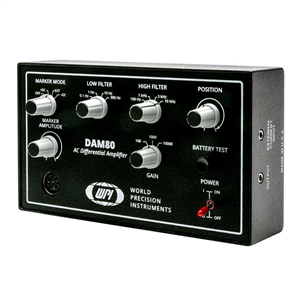
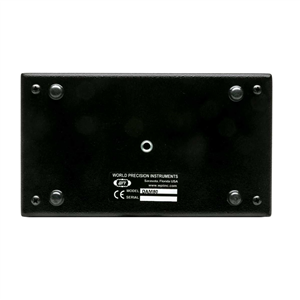
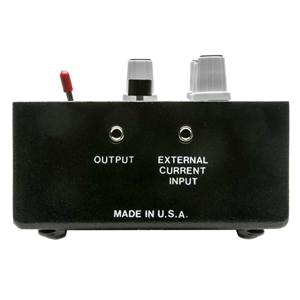
There are 3 images available to view - click to enlarge and scroll through the product gallery.
DAM80 Instruction Manual
/ Download as PDF
DAM Amplifier Series Datasheet
/ Download as PDF
Benefits
- Very low internal noise
- Ultra quiet DC power supply — no AC required
- Intrinsic low susceptibility to ground loops
- Small footprint
- Cost-effective
- Electrostatic Discharge?Protection!
Applications
- Amplifying biopotentials from metal electrodes
- Brain slice field stimulation
- EAG (Electroantennogram)
- ERG (Electroretinogram)
DAM80 Features
- Battery powered to eliminate line noise
- High pass and low pass filtering
- Single ended or differential operation
- AC amplification only
- Includes low-noise headstage
- Variable output positioning
- Constructed of high quality components to ensure minimal intrinsic (shot) noise
- Portable
- Rack mountable
WPI’s DAM series amplifier’s are well known as a standard of the industry for extracellular potential amplification. These battery powered bio-amplifiers are designed with a compact chassis profile that enables the user to locate the unit closer to the preparation and thereby minimize long lead lengths which contribute to noise. Each amplifier is equipped with selectable high and low filters, and a position control to offset galvanic potentials which may develop during recording. A choice of models offer additional features that are useful for certain applications. The startup kit (included) is shown in the image.
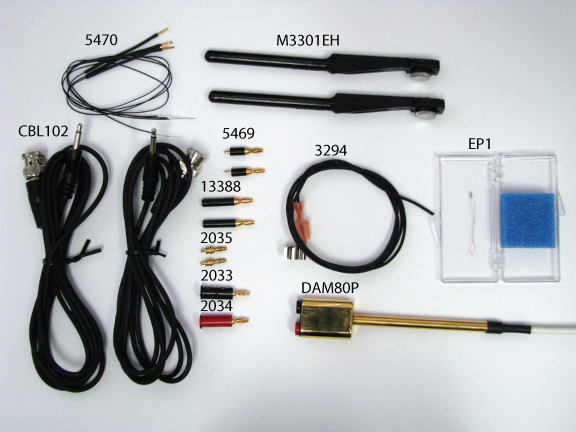
DAM80 startup kit includes
- CBL102 Cable, BNC-to-3.5mm plug, 6 ft (2m) (two)
- 5469 Adapter, mini-banana to 0.031 skt. (two)
- 13388 Adapter, mini-banana to 2mm skt. (two)
- 3294 Cable, ground clip to wire, 3 ft
- 2033 Mini-banana plug, black
- 2034 Mini-banana plug, red
- 2035 Mini-banana plug solderable turrent (two)
- EP1 Ag/AgCl pellet (70 mm wire) 1mm diam x 2.5 mm long
- M3301EH Electrode Holder, 14cm (two)
- 5470 0.031-inch jack on 12-inch wire (package of 4)
Current Generation
The DAM80 is perfect for gated or manual current generation for histological marking, iontophoresis or cell stimulation. It includes a very low noise remote active headstage that is useful for very high impedance amplification utilizing glass or metal electrodes.
Remote active headstage
DAM80, an AC amplifier only, features a very low noise headstage probe which can be mounted in micromanipulators for up-close cortical recording, for extracellular recording from high impedance glass or metal microelectrodes. Also provides a gated current for tissue marking.
Portability
DAM series amplifiers can be used as standalone units on any tabletop, or use optional clamp-mounting hardware to locate them conveniently within the work area. Alternatively, a pair of amplifiers can be mounted into a standard equipment rack with a rack mount kit (#3484 ). A variety of hook up accessories are available to configure your application
Feature Comparision Chart
| DAM50 | DAM80 | |
| Input Mode | AC/DC | AC |
| Input Configuration | Differential/Single Ended | Differential |
| Gain Range | 100-10,000 (AC) 10-1,000 (DC) |
100 - 10,000 (AC) |
| High/Low Filters | Yes | Yes |
| Offset Position Control | Yes | Yes |
| Current Generator | No | Yes |
| Remote Active Headstage | No | Yes |
| Output Connection | BNC | 3.5 mm mini phone |
| Standard Input Connection | unterminated wire | Mini banana |
| Power Supply | (2) 9V alkaline batteries | (2) 9V alkaline batteries |
Specifications
| INPUT IMPEDANCE | 1012 Ω, common mode and differential |
| INPUT LEAKAGE CURRENT | 50 pA (typical) |
| COMMON MODE REJECTION RATIO | 100 dB @ 50/60 Hz |
| INPUT CAPACITANCE | 20 pF |
| AC MODE NOISE | 0.4 µV RMS (2uV p-p) 0.1-100 Hz |
| AC MODE NOISE | 2.6 µV RMS (10uV p-p) 1Hz-10 kH |
| BANDWIDTH FILTER SETTINGS, AC Mode | Low frequency, 0.1, 1, 10, 300 Hz |
| BANDWIDTH FILTER SETTINGS: AC Mode(DAM80) | High frequency, 0.1, 1, 3, 10 kHz |
| OUTPUT CONNECTORS | 3.5 mm MiniPhone connector on DAM80 |
| OUTPUT VOLTAGE SWING | ±8V |
| OUTPUT IMPEDANCE | 470 Ω |
| BATTERY TEST | Audible tone |
| CALIBRATOR SIGNAL | 10 Hz square wave |
| POSITION | Approximately 250 mV |
| CURRENT SOURCE:DAM80: DC Generator | 0 to ±50 µA, variable |
| EXTERNAL COMMAND | Input Voltage ±10 V commands |
| AC or DC current waveform | ±50 µA max. amplitude @ 200 Ω |
| BATTERIES | 2 x 9 V alkaline (included) |
| DIMENSIONS:DAM80 | 17.8 x 10.2 x 4.4 cm |
| SHIPPING WEIGHT | 1.6 kg |
Accessories
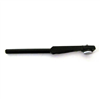
M3301EH
Replacement Electrode Holder, 14 cm x 7.2 mm diameter.
Replacement Electrode f...
Citations
Donnelly, W. T., Bartlett, D., & Leiter, J. C. (2016). Serotonin in the solitary tract nucleus shortens the laryngeal chemoreflex in anaesthetized neonatal rats. Experimental Physiology, 101(7), 946–961. http://doi.org/10.1113/EP085716
Feng, B., Joyce, S. C., & Gebhart, G. F. (2016). Optogenetic activation of mechanically insensitive afferents in mouse colorectum reveals chemosensitivity. American Journal of Physiology - Gastrointestinal and Liver Physiology, 310(10).
Kaldenbach, F., Bleckmann, H., & Kohl, T. (2016). Responses of infrared-sensitive tectal units of the pit viper Crotalus atrox to moving objects. Journal of Comparative Physiology A, 202(6), 389–398. http://doi.org/10.1007/s00359-016-1076-1
Mustafina, A. N., Koroleva, K. S., Giniatullin, R. A., & Sitdikova, G. F. (2016). Acid Sensitive Ion Channels as Target of Hydrogen Sulfide in Rat Trigeminal Neurons. BioNanoScience, 1–3. http://doi.org/10.1007/s12668-016-0237-6
Orton, L. D., Papasavvas, C. A., & Rees, A. (2016). Commissural Gain Control Enhances the Midbrain Representation of Sound Location. The Journal of Neuroscience?: The Official Journal of the Society for Neuroscience, 36(16), 4470–81. http://doi.org/10.1523/JNEUROSCI.3012-15.2016
Palanca-Castan, N., Laumen, G., Reed, D., & Köppl, C. (2016). The Binaural Interaction Component in Barn Owl (Tyto alba) Presents few Differences to Mammalian Data. Journal of the Association for Research in Otolaryngology, 1–13. http://doi.org/10.1007/s10162-016-0583-7
Feng, B., & Gebhart, G. F. (2015). In vitro Functional Characterization of Mouse Colorectal Afferent Endings. Journal of Visualized Experiments, (95), e52310–e52310. http://doi.org/10.3791/52310
Gholami, M., Moradpour, F., Semnanian, S., Naghdi, N., & Fathollahi, Y. (2015). Chronic sodium salicylate administration enhances population spike long-term potentiation following a combination of theta frequency primed-burst stimulation and the transient application of pentylenetetrazol in rat CA1 hippocampal neurons. European Journal of Pharmacology, 767, 165–174. http://doi.org/10.1016/j.ejphar.2015.10.021
Kim, Y.-J., & Kang, T.-C. (2015). The role of TRPC6 in seizure susceptibility and seizure-related neuronal damage in the rat dentate gyrus. Neuroscience, 307, 215–230. http://doi.org/10.1016/j.neuroscience.2015.08.054
Kulthinee, S., Wyss, J. M., & Roysommuti, S. (2015). Taurine supplementation prevents the adverse effect of high sugar intake on arterial pressure control after cardiac ischemia/reperfusion in female rats. Advances in Experimental Medicine and Biology, 803, 597–611. http://doi.org/10.1007/978-3-319-15126-7_48
Bouabid, S., Delaville, C., De Deurwaerdère, P., Lakhdar-Ghazal, N., & Benazzouz, A. (2014). Manganese-Induced Atypical Parkinsonism Is Associated with Altered Basal Ganglia Activity and Changes in Tissue Levels of Monoamines in the Rat. PLoS ONE, 9(6), e98952. http://doi.org/10.1371/journal.pone.0098952
Gal, R., Kaiser, M., Haspel, G., Libersat, F., Fouad, K., Libersat, F., … Yack, J. (2014). Sensory Arsenal on the Stinger of the Parasitoid Jewel Wasp and Its Possible Role in Identifying Cockroach Brains. PLoS ONE, 9(2), e89683. http://doi.org/10.1371/journal.pone.0089683
Huo, B.-X., Smith, J. B., & Drew, P. J. (2014). Neurovascular coupling and decoupling in the cortex during voluntary locomotion. The Journal of Neuroscience?: The Official Journal of the Society for Neuroscience, 34(33), 10975–81. http://doi.org/10.1523/JNEUROSCI.1369-14.2014
Hermann, P. M., Park, D., Beaulieu, E., & Wildering, W. C. (2013). Evidence for inflammation-mediated memory dysfunction in gastropods: putative PLA2 and COX inhibitors abolish long-term memory failure induced by systemic immune challenges. BMC Neuroscience, 14(1), 83. http://doi.org/10.1186/1471-2202-14-83
Kam, T.-I., Song, S., Gwon, Y., Park, H., Yan, J.-J., Im, I., … Jung, Y.-K. (2013). FcγRIIb mediates amyloid-β neurotoxicity and memory impairment in Alzheimer’s disease. The Journal of Clinical Investigation, 123(7), 2791–802. http://doi.org/10.1172/JCI66827
Park, H.-J., Bonmassar, G., Kaltenbach, J. A., Machado, A. G., Manzoor, N. F., & Gale, J. T. (2013). Activation of the central nervous system induced by micro-magnetic stimulation. Nature Communications, 4, 2463. http://doi.org/10.1038/ncomms3463
Sanchez-Jimenez, A., Torets, C., & Panetsos, F. (2013). Complementary processing of haptic information by slowly and rapidly adapting neurons in the trigeminothalamic pathway. Electrophysiology, mathematical modeling and simulations of vibrissae-related neurons. Frontiers in Cellular Neuroscience, 7, 79. http://doi.org/10.3389/fncel.2013.00079
Sotoyama, H., Namba, H., Chiken, S., Nambu, A., & Nawa, H. (2013). Exposure to the cytokine EGF leads to abnormal hyperactivity of pallidal GABA neurons: implications for schizophrenia and its modeling. Journal of Neurochemistry, 126(4), 518–28. http://doi.org/10.1111/jnc.12223
Jirakulsomchok, D., Napawachirahat, S., Kunbootsri, N., Suttitum, T., Wannanon, P., Wyss, J. M., & Roysommuti, S. (2012). Impaired renal response to portal infusion of hypertonic saline in adriamycin-treated rats. Clinical and Experimental Pharmacology and Physiology, 39(7), 636–641. http://doi.org/10.1111/j.1440-1681.2012.05722.x
Kato, Y. X., Furukawa, S., Samejima, K., Hironaka, N., & Kashino, M. (2012). Photosensitive-polyimide based method for fabricating various neural electrode architectures. Frontiers in Neuroengineering, 5. http://doi.org/10.3389/fneng.2012.00011
Ohnami, S., Kato, A., Ogawa, K., Shinohara, S., Ono, H., & Tanabe, M. (2012). Effects of milnacipran, a 5-HT and noradrenaline reuptake inhibitor, on C-fibre-evoked field potentials in spinal long-term potentiation and neuropathic pain. British Journal of Pharmacology, 167(3), 537–47. http://doi.org/10.1111/j.1476-5381.2012.02007.x
Razy-Krajka, F., Brown, E. R., Horie, T., Callebert, J., Sasakura, Y., Joly, J.-S., … Vernier, P. (2012). Monoaminergic modulation of photoreception in ascidian: evidence for a proto-hypothalamo-retinal territory. BMC Biology, 10(1), 45. http://doi.org/10.1186/1741-7007-10-45
Hu, W., Bi, Y., Zhang, K., Meng, F., & Zhang, J. (2011). High-frequency electrical stimulation in the nucleus accumbens of morphine-treated rats suppresses neuronal firing in reward-related brain regions. Medical Science Monitor?: International Medical Journal of Experimental and Clinical Research, 17(6), BR153-60. Retrieved from http://www.pubmedcentral.nih.gov/articlerender.fcgi?artid=3539543&tool=pmcentrez&rendertype=abstract
Kim, J.-E., & Kang, T.-C. (2011). The P2X7 receptor–pannexin-1 complex decreases muscarinic acetylcholine receptor–mediated seizure susceptibility in mice. Journal of Clinical Investigation, 121(5), 2037–2047. http://doi.org/10.1172/JCI44818
Kim, J.-E., & Kang, T.-C. (2011). The P2X7 receptor-pannexin-1 complex decreases muscarinic acetylcholine receptor-mediated seizure susceptibility in mice. The Journal of Clinical Investigation, 121(5), 2037–47. http://doi.org/10.1172/JCI44818
Schwarz, D., Bloom, D., Castro, R., Pagán, O. R., & Jiménez-Rivera, C. A. (2011). Parthenolide Blocks Cocaine’s Effect on Spontaneous Firing Activity of Dopaminergic Neurons in the Ventral Tegmental Area. Current Neuropharmacology, 9(1), 17–20. http://doi.org/10.2174/157015911795017010
Bedi, S. S., Yang, Q., Crook, R. J., Du, J., Wu, Z., Fishman, H. M., … Walters, E. T. (2010). Chronic Spontaneous Activity Generated in the Somata of Primary Nociceptors Is Associated with Pain-Related Behavior after Spinal Cord Injury. Journal of Neuroscience, 30(44), 14870–14882. http://doi.org/10.1523/JNEUROSCI.2428-10.2010
Gwak, Y. S., Unabia, G. C., & Hulsebosch, C. E. (2009). Activation of p-38alpha MAPK contributes to neuronal hyperexcitability in caudal regions remote from spinal cord injury. Experimental Neurology, 220(1), 154–61. http://doi.org/10.1016/j.expneurol.2009.08.012
Gwak, Y. S., Crown, E. D., Unabia, G. C., & Hulsebosch, C. E. (2008). Propentofylline attenuates allodynia, glial activation and modulates GABAergic tone after spinal cord injury in the rat. Pain, 138(2), 410–22. http://doi.org/10.1016/j.pain.2008.01.021
Greger, B., Kateb, B., Gruen, P., & Patterson, P. H. (2007). A chronically implantable, hybrid cannula–electrode device for assessing the effects of molecules on electrophysiological signals in freely behaving animals. Journal of Neuroscience Methods, 163(2), 321–325. http://doi.org/10.1016/j.jneumeth.2007.03.017
Zhao, P., Waxman, S. G., & Hains, B. C. (2006). Sodium channel expression in the ventral posterolateral nucleus of the thalamus after peripheral nerve injury. Molecular Pain, 2, 27. http://doi.org/10.1186/1744-8069-2-27
Charles, C. J., Jardine, D. L., Nicholls, M. G., & Richards, A. M. (2005). Adrenomedullin increases cardiac sympathetic nerve activity in normal conscious sheep. The Journal of Endocrinology, 187(2), 275–81. http://doi.org/10.1677/joe.1.06337
Kaminski, R. M., Marini, H., Kim, W.-J., & Rogawski, M. A. (2005). Anticonvulsant Activity of Androsterone and Etiocholanolone. Epilepsia, 46(6), 819–827. http://doi.org/10.1111/j.1528-1167.2005.00705.x
Li, X., Conklin, D., Pan, H.-L., & Eisenach, J. C. (2003). Allosteric adenosine receptor modulation reduces hypersensitivity following peripheral inflammation by a central mechanism. The Journal of Pharmacology and Experimental Therapeutics, 305(3), 950–5. http://doi.org/10.1124/jpet.102.047951
Masino, S. A. (2003). Quantitative comparison between functional imaging and single-unit spiking in rat somatosensory cortex. Journal of Neurophysiology, 89(3), 1702–12. http://doi.org/10.1152/jn.00860.2002
Wichmann, T., Kliem, M. A., & DeLong, M. R. (2001). Antiparkinsonian and behavioral effects of inactivation of the substantia nigra pars reticulata in hemiparkinsonian primates. Experimental Neurology, 167(2), 410–24. http://doi.org/10.1006/exnr.2000.7572

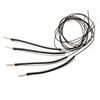
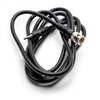
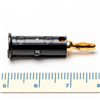

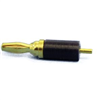

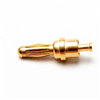

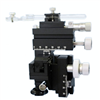
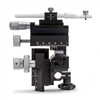
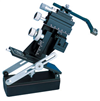
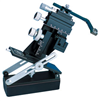

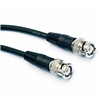
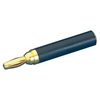
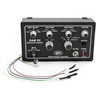
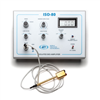



Request
Catalogue
Chat
Print